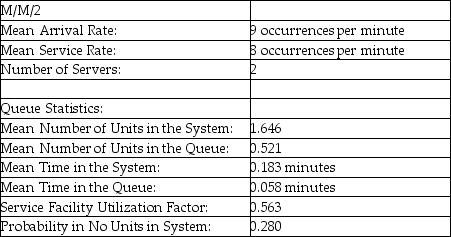Multiple Choice
Table 13-1 
-Using the information provided in Table 13-1 and counting each person being served and the people in line, on average, how many people would be in this system?
A) 0.521
B) 1.646
C) 1.125
D) 0.183
E) None of the above
Correct Answer:

Verified
Correct Answer:
Verified
Q1: An "infinite calling population" occurs when the
Q8: At an automatic car wash,cars arrive randomly
Q20: Table 13-2 <img src="https://d2lvgg3v3hfg70.cloudfront.net/TB2951/.jpg" alt="Table 13-2
Q20: With regard to queuing theory,define what is
Q23: Table 13-1 <img src="https://d2lvgg3v3hfg70.cloudfront.net/TB2951/.jpg" alt="Table 13-1
Q24: Table 13-1 <img src="https://d2lvgg3v3hfg70.cloudfront.net/TB2951/.jpg" alt="Table 13-1
Q31: Cars arrive at a local JLUBE franchise
Q98: What is meant by a multiphase system?
Q142: A single automatic car wash with one
Q145: Little's Flow Equations are transferable to a